-

Competitive Price Perfile Diatomite Kieselguhr Filter Aid
Diatomite is a fossil diatomite deposit formed after the death of a single celled plant called diatom and a accumulation period of about 10000 to 20000 years. Diatoms are one of the earliest protozoa on the earth. They live in seawater or lake water. They create 70% of the oxygen on the earth. During the growth process, it continuously absorbs the free silicon in the water to form a solid and porous cell wall. After the end of the diatom life cycle, the cell wall will not decompose and deposit to the underwater bottom. Diatomite is formed through crustal changes.
This diatomite is formed by the deposition of the remains of single celled aquatic chemical Book Plant diatom. The unique performance of this diatom is that it can absorb free silicon in water to form its bones. When its life is over, it will deposit and form diatomite deposit under certain geological conditions. It has some unique properties, such as porosity, low concentration, large specific surface area, relative incompressibility and chemical stability. After changing its particle size distribution and surface properties through processing processes such as crushing, sorting, calcination, air flow classification and impurity removal, it can be applied to a variety of industrial requirements such as coatings and paint additives. -

China Factory Good Quality Celite Diatomaceous Earth 545
Diatomite is a fossil diatomite deposit formed after the death of a single celled plant called diatom and a accumulation period of about 10000 to 20000 years. Diatoms are one of the earliest protozoa on the earth. They live in seawater or lake water. They create 70% of the oxygen on the earth. During the growth process, it continuously absorbs the free silicon in the water to form a solid and porous cell wall. After the end of the diatom life cycle, the cell wall will not decompose and deposit to the underwater bottom. Diatomite is formed through crustal changes.
This diatomite is formed by the deposition of the remains of single celled aquatic chemical Book Plant diatom. The unique performance of this diatom is that it can absorb free silicon in water to form its bones. When its life is over, it will deposit and form diatomite deposit under certain geological conditions. It has some unique properties, such as porosity, low concentration, large specific surface area, relative incompressibility and chemical stability. After changing its particle size distribution and surface properties through processing processes such as crushing, sorting, calcination, air flow classification and impurity removal, it can be applied to a variety of industrial requirements such as coatings and paint additives. -
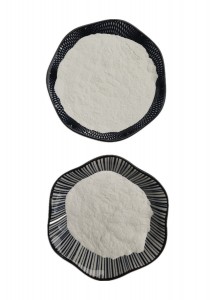
China Manufacturer Price Calcined Diatomaceous Earth
Diatomite is a fossil diatomite deposit formed after the death of a single celled plant called diatom and a accumulation period of about 10000 to 20000 years. Diatoms are one of the earliest protozoa on the earth. They live in seawater or lake water. They create 70% of the oxygen on the earth. During the growth process, it continuously absorbs the free silicon in the water to form a solid and porous cell wall. After the end of the diatom life cycle, the cell wall will not decompose and deposit to the underwater bottom. Diatomite is formed through crustal changes.
This diatomite is formed by the deposition of the remains of single celled aquatic chemical Book Plant diatom. The unique performance of this diatom is that it can absorb free silicon in water to form its bones. When its life is over, it will deposit and form diatomite deposit under certain geological conditions. It has some unique properties, such as porosity, low concentration, large specific surface area, relative incompressibility and chemical stability. After changing its particle size distribution and surface properties through processing processes such as crushing, sorting, calcination, air flow classification and impurity removal, it can be applied to a variety of industrial requirements such as coatings and paint additives. -
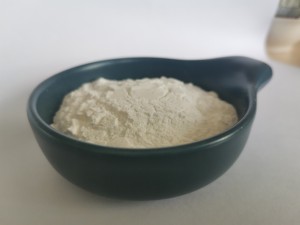
Diatomaceous earth functional filler
Diatomite is a fossil diatomite deposit formed after the death of a single celled plant called diatom and a accumulation period of about 10000 to 20000 years. Diatoms are one of the earliest protozoa on the earth. They live in seawater or lake water. They create 70% of the oxygen on the earth. During the growth process, it continuously absorbs the free silicon in the water to form a solid and porous cell wall. After the end of the diatom life cycle, the cell wall will not decompose and deposit to the underwater bottom. Diatomite is formed through crustal changes.
This diatomite is formed by the deposition of the remains of single celled aquatic chemical Book Plant diatom. The unique performance of this diatom is that it can absorb free silicon in water to form its bones. When its life is over, it will deposit and form diatomite deposit under certain geological conditions. It has some unique properties, such as porosity, low concentration, large specific surface area, relative incompressibility and chemical stability. After changing its particle size distribution and surface properties through processing processes such as crushing, sorting, calcination, air flow classification and impurity removal, it can be applied to a variety of industrial requirements such as coatings and paint additives. -
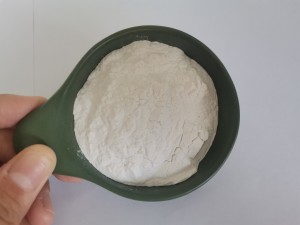
Centrifugal casting coating celite diatomaceous earth filter price
Diatomite is a fossil diatomite deposit formed after the death of a single celled plant called diatom and a accumulation period of about 10000 to 20000 years. Diatoms are one of the earliest protozoa on the earth. They live in seawater or lake water. They create 70% of the oxygen on the earth. During the growth process, it continuously absorbs the free silicon in the water to form a solid and porous cell wall. After the end of the diatom life cycle, the cell wall will not decompose and deposit to the underwater bottom. Diatomite is formed through crustal changes.
This diatomite is formed by the deposition of the remains of single celled aquatic chemical Book Plant diatom. The unique performance of this diatom is that it can absorb free silicon in water to form its bones. When its life is over, it will deposit and form diatomite deposit under certain geological conditions. It has some unique properties, such as porosity, low concentration, large specific surface area, relative incompressibility and chemical stability. After changing its particle size distribution and surface properties through processing processes such as crushing, sorting, calcination, air flow classification and impurity removal, it can be applied to a variety of industrial requirements such as coatings and paint additives. -
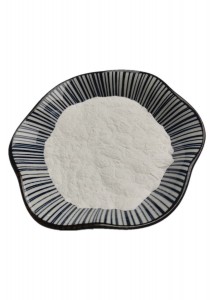
diatomaceous earth dry diatomite celite 545 filter for Paper industry
Diatomite is a fossil diatomite deposit formed after the death of a single celled plant called diatom and a accumulation period of about 10000 to 20000 years. Diatoms are one of the earliest protozoa on the earth. They live in seawater or lake water. They create 70% of the oxygen on the earth. During the growth process, it continuously absorbs the free silicon in the water to form a solid and porous cell wall. After the end of the diatom life cycle, the cell wall will not decompose and deposit to the underwater bottom. Diatomite is formed through crustal changes.
This diatomite is formed by the deposition of the remains of single celled aquatic chemical Book Plant diatom. The unique performance of this diatom is that it can absorb free silicon in water to form its bones. When its life is over, it will deposit and form diatomite deposit under certain geological conditions. It has some unique properties, such as porosity, low concentration, large specific surface area, relative incompressibility and chemical stability. After changing its particle size distribution and surface properties through processing processes such as crushing, sorting, calcination, air flow classification and impurity removal, it can be applied to a variety of industrial requirements such as coatings and paint additives. -
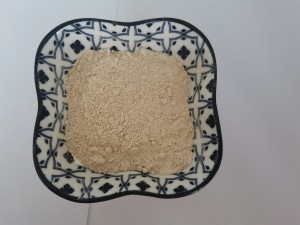
diatomacous celite diatomite earth filler
Diatomite is a fossil diatomite deposit formed after the death of a single celled plant called diatom and a accumulation period of about 10000 to 20000 years. Diatoms are one of the earliest protozoa on the earth. They live in seawater or lake water. They create 70% of the oxygen on the earth. During the growth process, it continuously absorbs the free silicon in the water to form a solid and porous cell wall. After the end of the diatom life cycle, the cell wall will not decompose and deposit to the underwater bottom. Diatomite is formed through crustal changes.
This diatomite is formed by the deposition of the remains of single celled aquatic chemical Book Plant diatom. The unique performance of this diatom is that it can absorb free silicon in water to form its bones. When its life is over, it will deposit and form diatomite deposit under certain geological conditions. It has some unique properties, such as porosity, low concentration, large specific surface area, relative incompressibility and chemical stability. After changing its particle size distribution and surface properties through processing processes such as crushing, sorting, calcination, air flow classification and impurity removal, it can be applied to a variety of industrial requirements such as coatings and paint additives. -

High Grade Diatomaceous Earth Diatomite Filter Aid
Diatomite is a fossil diatomite deposit formed after the death of a single celled plant called diatom and a accumulation period of about 10000 to 20000 years. Diatoms are one of the earliest protozoa on the earth. They live in seawater or lake water. They create 70% of the oxygen on the earth. During the growth process, it continuously absorbs the free silicon in the water to form a solid and porous cell wall. After the end of the diatom life cycle, the cell wall will not decompose and deposit to the underwater bottom. Diatomite is formed through crustal changes.
This diatomite is formed by the deposition of the remains of single celled aquatic chemical Book Plant diatom. The unique performance of this diatom is that it can absorb free silicon in water to form its bones. When its life is over, it will deposit and form diatomite deposit under certain geological conditions. It has some unique properties, such as porosity, low concentration, large specific surface area, relative incompressibility and chemical stability. After changing its particle size distribution and surface properties through processing processes such as crushing, sorting, calcination, air flow classification and impurity removal, it can be applied to a variety of industrial requirements such as coatings and paint additives. -
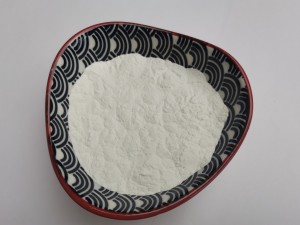
China Manufacturer Horticulture Diatomite Food Grade
Diatomite is a fossil diatomite deposit formed after the death of a single celled plant called diatom and a accumulation period of about 10000 to 20000 years. Diatoms are one of the earliest protozoa on the earth. They live in seawater or lake water. They create 70% of the oxygen on the earth. During the growth process, it continuously absorbs the free silicon in the water to form a solid and porous cell wall. After the end of the diatom life cycle, the cell wall will not decompose and deposit to the underwater bottom. Diatomite is formed through crustal changes.
This diatomite is formed by the deposition of the remains of single celled aquatic chemical Book Plant diatom. The unique performance of this diatom is that it can absorb free silicon in water to form its bones. When its life is over, it will deposit and form diatomite deposit under certain geological conditions. It has some unique properties, such as porosity, low concentration, large specific surface area, relative incompressibility and chemical stability. After changing its particle size distribution and surface properties through processing processes such as crushing, sorting, calcination, air flow classification and impurity removal, it can be applied to a variety of industrial requirements such as coatings and paint additives. -
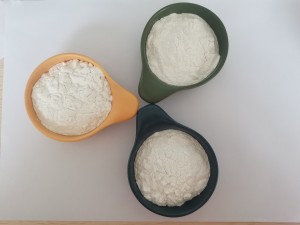
diatomaceous earth non calcined diatomite celite 545 filter
Diatomite is a fossil diatomite deposit formed after the death of a single celled plant called diatom and a accumulation period of about 10000 to 20000 years. Diatoms are one of the earliest protozoa on the earth. They live in seawater or lake water. They create 70% of the oxygen on the earth. During the growth process, it continuously absorbs the free silicon in the water to form a solid and porous cell wall. After the end of the diatom life cycle, the cell wall will not decompose and deposit to the underwater bottom. Diatomite is formed through crustal changes.
This diatomite is formed by the deposition of the remains of single celled aquatic chemical Book Plant diatom. The unique performance of this diatom is that it can absorb free silicon in water to form its bones. When its life is over, it will deposit and form diatomite deposit under certain geological conditions. It has some unique properties, such as porosity, low concentration, large specific surface area, relative incompressibility and chemical stability. After changing its particle size distribution and surface properties through processing processes such as crushing, sorting, calcination, air flow classification and impurity removal, it can be applied to a variety of industrial requirements such as coatings and paint additives. -

diatomite filler diatomite carrier mine celite kieselguhr filter price powder
Diatomite is a fossil diatomite deposit formed after the death of a single celled plant called diatom and a accumulation period of about 10000 to 20000 years. Diatoms are one of the earliest protozoa on the earth. They live in seawater or lake water. They create 70% of the oxygen on the earth. During the growth process, it continuously absorbs the free silicon in the water to form a solid and porous cell wall. After the end of the diatom life cycle, the cell wall will not decompose and deposit to the underwater bottom. Diatomite is formed through crustal changes.
This diatomite is formed by the deposition of the remains of single celled aquatic chemical Book Plant diatom. The unique performance of this diatom is that it can absorb free silicon in water to form its bones. When its life is over, it will deposit and form diatomite deposit under certain geological conditions. It has some unique properties, such as porosity, low concentration, large specific surface area, relative incompressibility and chemical stability. After changing its particle size distribution and surface properties through processing processes such as crushing, sorting, calcination, air flow classification and impurity removal, it can be applied to a variety of industrial requirements such as coatings and paint additives. -
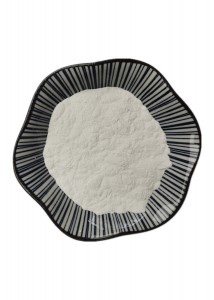
China factory wholesale paper industry diatomite filler
Diatomite is a fossil diatomite deposit formed after the death of a single celled plant called diatom and a accumulation period of about 10000 to 20000 years. Diatoms are one of the earliest protozoa on the earth. They live in seawater or lake water. They create 70% of the oxygen on the earth. During the growth process, it continuously absorbs the free silicon in the water to form a solid and porous cell wall. After the end of the diatom life cycle, the cell wall will not decompose and deposit to the underwater bottom. Diatomite is formed through crustal changes.
This diatomite is formed by the deposition of the remains of single celled aquatic chemical Book Plant diatom. The unique performance of this diatom is that it can absorb free silicon in water to form its bones. When its life is over, it will deposit and form diatomite deposit under certain geological conditions. It has some unique properties, such as porosity, low concentration, large specific surface area, relative incompressibility and chemical stability. After changing its particle size distribution and surface properties through processing processes such as crushing, sorting, calcination, air flow classification and impurity removal, it can be applied to a variety of industrial requirements such as coatings and paint additives.

